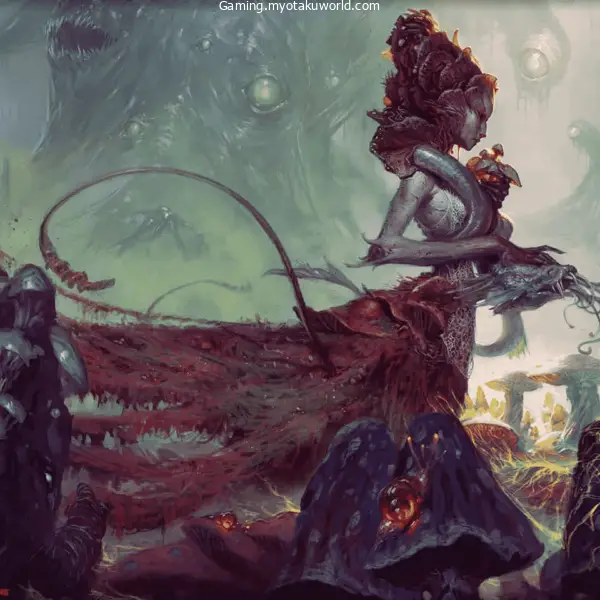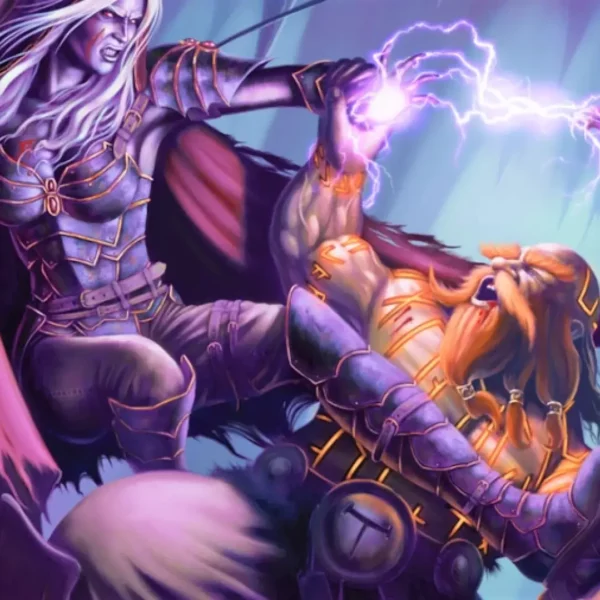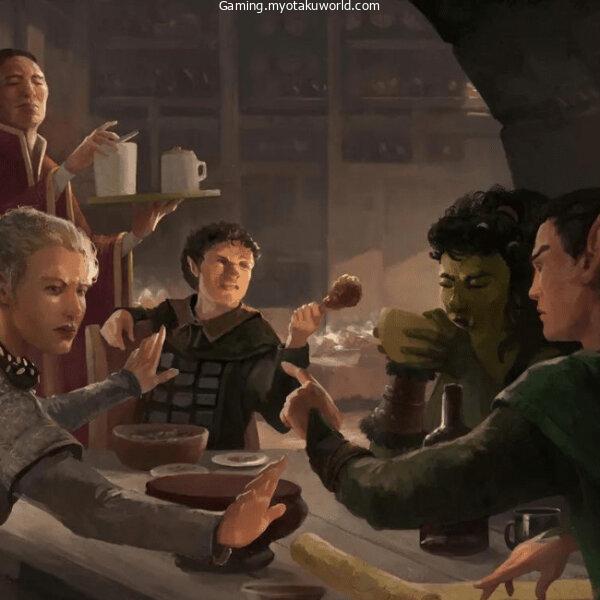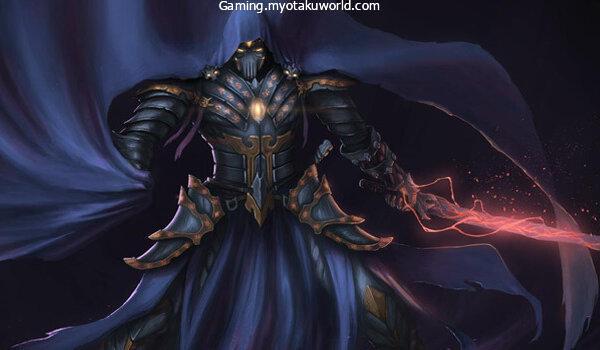Ever feel like enemies keep resisting your main damage type?
Do you ever want to throw an amazing curveball at your adversaries?
Chromatic Orb could help with all of these needs and much more.
So let’s take a look.
Chromatic Orb
School: Evocation
Level: 1st
Casting Time: 1 Action
Range: 90 Feet
Components verbal, somatic Material (A Diamond with a value of 50 gold pieces)
Duration: Instantaneous
The idea is to throw the ball with a magical creature and choose between six damage types such as cold, acid, lightning, fire, and poison. It also deals 3d8 damage upon hitting.
The material component of it isn’t consumable, however, you will need to start investing to get it done.
Who Gets It?
First of all, Chromatic Orb is available to wizards and sorcerers.
Because the spell is directed at only one enemy, it is a possible alternative in the magician’s Twinned Spell meta-magical ability.
In addition to the classes that receive this option in their spell list the two Arcane Trickster Rogues along with Eldritch Knight Fighters gain access to the wizard spell list in a certain capacity, which allows them to also utilize this spell.
All classes can benefit from this ability from the magic initiate feat too.
Chromatic Orb Uses one of the strongest first-level spells, being capable of dealing 3d8 of various damage types is extremely useful.
Fire is an effective damage type, considering that certain enemies such as trolls regeneration can be stopped by fire, and even enemies like Mummies are prone to it.
Does shambling Mound come your way? The fire and cold damages aren’t the best options, so why not attack it with poison or acid?
If you notice enemies who are not able to take the type of damage you apply to them, try another time.
Chromatic Orb also has a very large range, which allows you to slay enemies from the distance of three to four turns to be covered.
Chromatic Orb’s Competition

How do the chromatic orb stack against other damaging-dealing spells of 1st level that are available to wizards of 1st level and sorcerers?
It is one of the top contenders in terms of damage-dealing capabilities however, all have major drawbacks.
Burning hands deals 3d6 fire damage in a 15-foot cone. In terms of the balance of the game is involved, D&D’s balancing algorithm supposes that it hits two creatures during an average casting.
If one creature is successful on its Dexterity saving throw, and one fails, it will deal an average of 15 damage from fire. It’s pretty good, but its disadvantages can be detrimental.
If you’re in close proximity to your enemies for this magic spell to be cast, then you’ll need to ensure that this spell is effective in killing them. If not, in the path of the fire, most wizards of the 1st level do not have strong enough defenses to withstand a lot of attacks.
Additionally, fire is among the more frequently encountered damage types that are resisted within the world of rogues and dragons.
Goblins and kobolds of every kind will not be able to resist this power however, some low-level enemies can easily resist fire such as oozes, fiends, and undead that incorporate shadows and specters.
Magic missile is a spell that is found in nearly every 1st-level wizard’s spellbook and it’s simple to understand the reason.
The missiles that it fires are always hitting targets, and they can be scattered across several targets, can be fired from a distance, and can cause hard-to-resist force damage. Its main drawback is its weak damage output. It can only deal average damage of 10.
It is enough to take out certain of the weakest creatures in a single turn however it is not enough to cause a hiccup to all creatures with a strength rating of 1/4 or more.
Ice knife is a charming spell that can be fired from a long distance and deal some damage via area-of-effect. If the spell strikes its intended target, it takes 1d10 of cold damages.
In the end, regardless of whether the attack does or doesn’t, it explodes making the target and any living creatures that are within 5 meters to make a success in a Dexterity saving-shrew or suffer 2d6 cold damage.
If the spell is successful and the zone of its effect is affecting two creatures, and one of those creatures is successful in its saving throw the spell will deal an average of twelve cold injuries.
The damage type of the spell cold is opposed by a variety of enemies of lower levels that resist fire damage. Furies and insidious creatures delight in elemental damage, just like cold and fire.
The Power of Chromatic Orb
Chromatic Orb is an attack-focused spell that is best utilized from a long distance. For wizards and sorcerers having the ability to be from the enemy is an immense benefit.
When casting this magic spell, you create an attack with a ranged range on the target.
If the attack is successful, the target suffers the equivalent of thirteen (3d8) of the damage. The kind of damage this spell can cause can be selected from a set of five options: acid, lightning, cold, fire, or thunder.
This ability to adapt is the chromatic orb’s greatest power, but its damage average is impressive as well.
Other spells that cause high damage like hand burning and Ice knives have a limited damage type that makes it difficult to use against certain enemies such as fiends.
Fiends can be resistant to or invulnerable to fire, cold lightning, and cold damage.
When Baldur’s Gate: The Descent Avernuspromising an action that fights fiends the ability to defeat these resistances to damage early is an enormous benefit. To overcome the resistances, make use of thunder damage or acid.
Another extremely resistant monster type is ‘oozes’. They’re extremely resistant, and their resistances aren’t easy to determine.
Gray Oozes are immune to fire, cold, and lightning, as fiends. Use either thunder or acid! Ochre Jellies are incredibly resistant to acid on their own however they are also invulnerable to lightning.
So make sure to use cold, fire, or thunder! Additionally, Black puddings are invulnerable to cold, acid, and lightning, so you should use either thunder or fire!
The reason that this flexibility is important is due to the sheer number of spells you can create as a wizard of 1st level (or that is, the amount of spells that you learn when you are a first-level wizard) is at a minimum.
You might be able to learn an Evocation spell, which deals with various damage types for every situation, but the chromatic orb allows you to incorporate the various damage types into one spell, leaving your lists for specific spells such as the ability to detect magic or the ability to levitate.
Chromatic Orb Spell Comparisons
So let’s examine Chromatic Orb to a handful of first-level spells that wizards and sorcerers could find useful.
Magic Missile and Witch Bolt are both available to wizards and sorcerers.
They also have Sorcerer’s Chaos Bolt, which is identical in appearance to Chromatic Orb.
Vs. Magic Missile

Magic Missile, when cast in a first-level spell slot, permits the user to shoot 3 magical darts which automatically hit every time, and do 1-for-4 force damage.
One roll is created and darts all do the same harm.
In the end, Magic Missile does 10.5 force damage, which is compared to 13.5 destruction the Chromatic Orb puts out on average.
From a pure damage per turn standpoint, Chromatic Orb is better.
The difference is that Magic Missile is more precise. And force damage is probably the best damage type that doesn’t come from magical slashing/bludgeoning/piercing.
They are both good each in their own way.
Vs. Witch Bolt

Next, Witch Bolt.
Witch Bolt is a concentration spell that is different from the other two with a concentration of just one minute.
It can deal approximately 6.5 lightning-related damage each turn. It requires an attack that is ranged which deals 1d12 lightning damage for each hit.
If it does the target, you can take an action every turn to automatically give an additional 1d12 per turn, as long as it stays within 30 feet of you and is not entirely in protection.
This means that Witch Bolt will be considerably less effective than Chromatic Orb.
It can however provide a better job of sustaining damage that is in the middle of the line between Magic Missile and Chromatic Orb.
Vs. Chaos Bolt

The Xanathar’s Guide to Everything gave us one of the most entertaining sorcerer spells we’ve seen in Chaos Bolt.
Chaos Bolt lets you throw a swarm of chaotic energy at a target in the vicinity. Create a ranged spell when it is hit, your target suffers 2d8+6 damage.
You can select either of two numbers and that number will determine the damage type. Check out this web page to see a damage type table
Chaos Bold does 2d8+1d6 damage when a bolt of energy that is chaotic strikes the target.
Depending on the type of role you choose for the 2d8, this will give you the option of choosing the damage type you want to use.
If you roll twice, the spell can jump onto another person, which allows you to roll an attack roll to another opponent.
Then you roll the dice again to take the same damage.
When you double the roll can continue for as long as there are targets that you haven’t hit because it is only able to hit each target once per casting.
This means that Chaos Bolt could potentially do an infinite amount of damage depending on the number of enemies you’ve got.
The Chromatic Orb is more reliable and can do an additional point of damage per turn however, Chaos Bolt has better range and could possibly cause more damage.
Chromatic Orb Build Ideas
The most significant flaw in Chromatic Orb is that it requires a 50 GP material component.
Wizards typically have 110 gold starting with 10 being out of the back. It is necessary to reach the average to be able to afford it.
Because the Spellbook and the smaller diamond both cost 50 GP and both would be required, you’d choose to wear mage armor instead of normal armor, using a staff (5 GP) to act as an arcane focus and traveler’s attire (2 GP) for obvious reasons.
Sorcerers can only collect around 70 gold coins when they first start. However, you don’t have to purchase the expensive book on spells and can substitute an explorer’s kit instead for just 40 gold.
Wizard

There’s no wizard subclass for which Chromatic Orb is most suitable.
It works for each of them.
Sure, the school of Evocation is a fantastic 10th level feature that can assist.
However, it is possible for it to surpass lower-level spells at this stage.
Higher Elfs or Forest Gnomes can be good alternatives, but Wizards do not require an Intelligence Bonus.
Draconic Bloodline

If you decide to go for an Elemental Abilities feat it could be an amazing combination with chromatic orbs, specifically hot or cold.
Elemental Adept lets you avoid resistance to acid as well as fire, cold lightning, thunder, and acid as you will see in all the options available to Chromatic Orb.
It is also possible to consider a 1 on the damage dies as a 2.
Draconic Ancestry lets you choose the dragons connected to acid, cold lightning, fire, or poison. This leaves acid lightning, cold, fire, or lightning to options.
You’ll gain more hit points, as well as possibly an armor class of high due to draconic resilience. These are both beneficial to soft sorcerers.
Elemental Affinity lets you cause even more damage to the damage type you prefer and adds your charm to the role that allows for more damage.
It also allows you to use a sorcery point to increase resistance to damage for an hour.
By using Metamagic along with Draconic Bloodline you can unleash the chromatic orb, and twinned firebolt.
Because one attack associated with this must be a cantrip, it may also be a speedy firebolt, or even a chromatic orb twinned, that is feasible at level 3 as it requires 3 magic points to take it off.
This means it could cause three times the amount of fire damage on one object with 1d10 of fire damage for two other targets as well as 3d8 damage from fire to 2 targets as well as 1d10 fire damage to one target.
Thus, either 13.5 +11 fire damage for one goal and 11 to the other or 13.5 + 11 the fire damage of one object as well as 13.5 loss to another, on an average per turn.
This doesn’t even include the bonus!
Pyromancy Sorcerer

If the DM allows it or swap the fire element for another at the discretion of a DM, when you reach level 6, you will get resistance against fire-related damage.
You can also avoid resistance, even without the ability, and cause 3 additional fire damage to any creature of your choice within 10 feet if employ a 1st or greater level spell that deals fire damage.
Is Chromatic Orb Right for You?
If you’ve got the cash there’s no reason to not consider studying the chromatic orb.
This damage-dealing spell is unmatched among spells of the 1st level as well as its versatility allows you to use it as your sole damage-dealing spell which leaves the opportunity to create more intriguing utility spells.
If your budget isn’t too tight wait until you’ve finished some adventures and earned some gold before buying the required material component.









